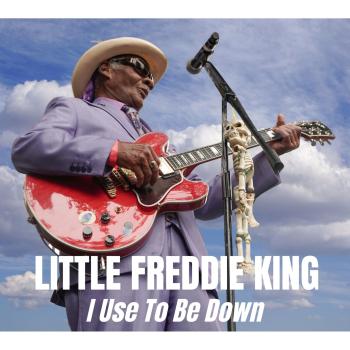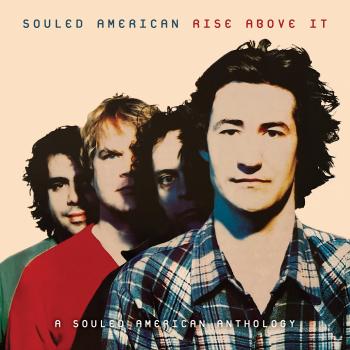Georgia Sea Island Singers & Mississippi Fred McDowell
Biography Georgia Sea Island Singers & Mississippi Fred McDowell
Georgia Sea Island Singers
are a group of African Americans who travel the world to share the songs, stories, dances, games, and language of their Gullah heritage.
Started sometime in the early 1900s and composed of many individuals over time, the current generation of singers includes Frankie Sullivan Quimby and Tony Merrell. Together they have presented educational programs that testify about the history of enslaved Africans from coastal Georgia and celebrate the rich language, culture, and traditions that developed on and near the Sea Islands of the Georgia coast —in relative isolation from the rest of the South—for more than 200 years.
The famed Smithsonian Institution folklorist Alan Lomax discovered the Georgia Sea Island Singers in 1935, while visiting St. Simons Island with writer and folklorist Zora Neale Hurston. He returned in 1959-60 during a collecting trip through the American South. His field recordings of the singers from that trip can be found on two volumes of Rounder Records’ Alan Lomax Collection, Southern Journey Series. Since that time, the singers have performed for three presidents, including Jimmy Carter at his inauguration, and have made numerous appearances at a variety of events, including the Smithsonian’s Folklife Festival and the National Book Festival, both held in Washington, D.C.; the 1994 Olympic Games in Lillehammer, Norway; the National Black Storytelling Festival; and the G8 Summit on Sea Island in 2004. In 1990 the group received the Governor’s Award in the Humanities.
Past associates of the group have included the legendary Bessie Jones, who was a key figure in the group’s history, along with Joe Armstrong, John Davis, Peter Davis, Mabel Hillary, Henry Morrison, Doug Quimby, and Emma Ramsey. Many members of the group were born or raised in or near Brunswick, St. Simons Island, and other Georgia sea islands. All evidence suggests that amateur folklorist Lydia Parrish organized the group as the Spiritual Singers Society of Coastal Georgia around 1920, partly to perform at the Cloister Hotel on Sea Island.
Bessie Jones joined the group in 1933, and at some point thereafter, the name was changed. In the introduction to folklorist Bess Lomax Hawes’s book, Step It Down (1972) cowritten with Bessie Jones, Hawes writes that Jones moved from her childhood home of Dawson to her husband’s home on St. Simons Island, where “she met the Georgia Sea Island Singers, a Negro choral group whose early period has been described in a book by Mrs. Lydia Parrish.” Parrish’s book, Slave Songs of the Georgia Sea Islands (1942), along with the compilation of information found in Step It Down, are two of the best resources on both the group’s early history and Gullah traditions.
Formed to perpetuate the traditions of their enslaved ancestors, the Sea Island Singers teach and perform the songs, dances, shouts, and games with audiences in a participatory, interactive manner, echoing the engaging quality of the traditions themselves. Throughout their performances, the singers also offer insight into the reasons behind the development and sustenance of their traditions. A capella call-and-response singing, hand clapping, children’s games, and speaking in the Gullah dialect are often included in the group’s performances, as is a demonstration of the ring shout dance, described in Hawes and Jones’s book as a “religious exercise, a form of worship, born out of African tradition and neatly distinguished from secular activities.” The dancers move in a circular flow, with their feet never leaving the floor and their legs never crossing each other, as they follow the calls of a shouter.
The Georgia Sea Island Singers’ work has been collected on volumes 12 and 13 of Rounder Records’ Alan Lomax Collection, Georgia Sea Islands: Biblical Songs and Spirituals (1998), and Earliest Times: Georgia Sea Island Songs for Everyday Living (1998). Bessie Jones has three recordings on Rounder: So Glad I’m Here (1975), Step It Down (1979), and Put Your Hand on Your Hip, and Let Your Backbone Slip (2001).
Mary Elizabeth "Bessie" Jones
was born February 8, 1902, in Smithville, Georgia. When she was seven months old, her parents moved to Dawson. She grew up in a large, extended family that included her stepfather, James Sampson, and his parents, Jet and Julia Sampson. It was from the Sampsons, especially Jet, that young Bessie first learned about slavery and "the old ways." Music was as important as storytelling in her family. Her Uncle Gene sang and played guitar. All the men in her family played guitar or banjo, and they made their own banjos. Jet played the accordion and made banjos out of wood. Her mother played autoharp.
When Bessie was only nine years old, she got her first job doing childcare. That same year, her stepfather died, and the family moved to Osterfield to be closer to relatives. Bessie finished her last year of formal schooling in 1913, and the following year she met and married Cassius Davis, and soon thereafter gave birth to her first child, Rosalie. Davis lived on St. Simons Island, but had come to the mainland looking for work. Bessie began working as a farmhand, taking Rosalie to the fields with her.
After Davis's death around 1926, Bessie and her cousin decided to go to Florida to find better jobs. In Key Largo they were hired to do washing and ironing for a crew laying railroad track. After a short time there, she went to Miami and worked as a cook and maid. In 1928, she moved on to Okeechobee to farm; there, she met and married George Jones. Together, they became migrant workers and followed the crop harvests from Florida to Connecticut. During these years she also traveled to Brunswick, Georgia, and St. Simons Island, visiting both George's family and her deceased first husband's family.
By 1933, Bessie and George settled on St. Simons Island. They continued to do migrant work, but kept their home on the island. In the off-season, Bessie worked as a maid and cook, and joined Lydia Parish's Spiritual Singers Society of Coastal Georgia.
Her second child, George L., was born in 1935, followed by her third child, Joseph, in 1937.
From 1939 to 1945, Bessie also took jobs as a nurse for the children of wealthy white families who lived or vacationed on the Georgia coast. In 1945, her husband George died. Bessie continued living and working on St. Simons Island, and was active in the founding of the Harlem Church of God in Christ.
In the mid-1950s Bessie met folklorist Alan Lomax, who was conducting fieldwork in the Georgia sea islands and working to collect the music of the Spiritual Singers Society. In 1960, Bessie was "called to teach" — to pass on to others what she knew about slavery through songs and stories that she learned as a child. While participating in Lomax's film on the Spiritual Singers Society, she went to sing for a child's birthday party. She was going to start off the party by singing a lullaby, then changed her mind. "But when I got up," she recalled, "I said I was glad to do it because this is where my grandfather was brought up at, and that gave me a head to speak right there. When I said that, they stopped the beer right there, and everything, and I was getting ready to sing to the child, but wasn't nobody saying nothing. Then something told me 'You got to tell them everything in your mind.'"
That was the first time in public that Jones began to tell the stories she had heard as a child. "The Lord blessed me not to forget these things," she explained, "and keep them up among people who weren't studying it. White people know our backgrounds, but they're going to try to hold it back and keep us back as long as they possibly can." Guided by the "spirit," Jones recognized she had an opportunity to share the stories and songs about little-known aspects of the history of African Americans to others.
Over the next several years, Jones toured extensively, performing in clubs and concerts, and at festivals around the country. In 1963, she teamed up with a group of other singers to form The Georgia Sea Island Singers. This ensemble traveled together and was the subject of another film by Alan Lomax, The Georgia Sea Island Singers. At home, she continued to sing with the Spiritual Singers Society at public and private gatherings. She also participated in a prayer band that traveled during the Civil Rights Movement, marching with Martin Luther King in Beulah, Mississippi. It was during these years that Jones worked on her book Step It Down, published in 1972. In 1973 she released her first solo album, So Glad I'm Here, followed by Step It Down in 1975. Throughout the 1970s, Jones remained active singing with the Georgia Sea Island Singers and performing at inaugurations, in schools, and at festivals throughout the country.
Mississippi Fred McDowell
is widely viewed by blues aficionados as the most talented artist of his generation to be “discovered” during the blues revival of the late 1950s and 1960s. Despite his nickname, McDowell was a native of Tennessee, born in Rossville on 12 January 1904. He began playing guitar as a teenager and recalled that his main influences in Rossville were Raymond Payne, a native of Mount Pleasant, Mississippi, who taught McDowell to play in the open G or “Spanish” tuning, and an uncle who played guitar with a slide made from a dried steak bone. McDowell subsequently developed his own distinctive and influential slide technique using a pocketknife.
In Rossville, McDowell worked on his father’s small farm and performed at Saturday night fish fries and country dances. At around age twenty-one he moved to Memphis, where his jobs included building rail cars, stacking logs, and working at an oil mill and a dairy. McDowell traveled around Mississippi in the late 1920s, learning “Pea Vine Special” and other songs directly from blues pioneer Charley Patton while visiting the Cleveland area. McDowell moved to Como around 1940 and performed widely around the region until his music reached a broader audience after he was recoreded by folklorist Alan Lomax in 1959. McDowell features prominently on a four-volume set of Lomax’s field recordings, Sounds of the South (1960).
McDowell began performing on the festival and coffeehouse circuits, often receiving equal billing with other rediscovered blues artists who had been documented during the heyday of country blues recording in the late 1920s and early 1930s. Managed by Dick Waterman, McDowell appeared at many prominent venues, including the Newport Folk Festival in 1964. The following year he toured Europe with the American Folk Blues Festival tour.
Throughout the 1960s McDowell recorded widely in a variety of contexts. Albums on the Arhoolie and Testament labels feature McDowell performing with his wife, Annie Mae. Another Testament LP, Amazing Grace, features religious songs with McDowell accompanied by a group from his church, the Hunter’s Chapel Singers. Field recordings by George Mitchell feature McDowell with harmonica player Johnny Woods, and on the 1968 LP Levee Camp Blues, producer Pete Welding captured songs McDowell performed in his youth. One of the most popular of McDowell’s many recordings was I Do Not Play No Rock and Roll (1969). The album, recorded at the Malaco Records studio in Jackson and issued by Capitol Records, featured McDowell on electric guitar with a rhythm section and extended monologues on various topics.
McDowell’s slide guitar playing had already influenced young white artists, most notably Bonnie Raitt, and in 1971 the Rolling Stones covered McDowell’s version of the gospel standard “You’ve Got to Move” on Sticky Fingers. In the 1990s and 2000s his North Mississippi Hill Country blues style was popularized by his student R. L. Burnside and younger interpreters including the North Mississippi Allstars.














